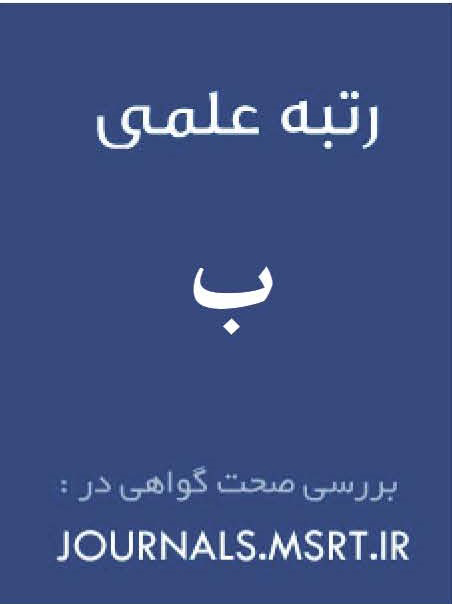Examining the Possibility of Spousal Rights Equality in the Structure of Temporary Marriage with a Jurisprudential Approach
Keywords:
Gender equality, rights of couples, temporary marriage, Islamic jurisprudenceAbstract
This article is designed with the aim of examining the possibility of achieving legal equality between spouses within the structure of temporary marriage, adopting a jurisprudential approach and within the framework of Islamic principles. Using a descriptive–analytical method and based on library studies, the research first clarifies the concept of “equality” as intended in this study. Then, in light of this concept, the legal structure of temporary marriage and the existing gender-based disparities—such as the unilateral right of the husband to terminate the duration (badh al-mudda)—are analyzed, and discriminatory instances are identified. Subsequently, considering social transformations and the changing status and role of women in contemporary societies, as well as the growing involvement of governments in safeguarding individual rights, the necessity of reconsidering certain jurisprudential rulings is emphasized. In this context, legal instruments such as the rule of la darar (prohibition of harm), the principle of nafī al-haraj (elimination of unbearable hardship), and the analysis of novel issues (masāʾil mustaḥdatha) are introduced as jurisprudential foundations for the reform or modification of some rulings related to spousal rights in temporary marriage. The article proceeds by examining how instances of harm and hardship are identified in marital relations and by analyzing variable subjects influenced by temporal and spatial changes that necessitate a change in ruling. It demonstrates that the removal or reduction of legal inequalities in temporary marriage is, to a large extent, attainable and realizable.
Downloads
References
Abbott, P., & Wallace, C. (2001). An Introduction to Sociology (Feminist Perspectives) (Translated by Maryam Khorasani, Hamid Ahmadi ed.). Mother's World.
Akhound Khorasani, M. K. i. H. (2006). Kifayat al-Usul (Vol. 1). Majma' al-Fikr al-Islami.
Ameli, Z. a.-D. i. A. (1989). Al-Rawdah al-Bahiyyah fi Sharh al-Lum'ah al-Dimashqiyyah (Vol. 10). Davari Bookstore.
Ansari, M. (1996). Fara'id al-Usul. Dar al-I'tisam.
Azam Azad, M. (2005). Awareness of Gender Inequalities: A Model for Measuring Awareness of Gender Inequalities. Women in Development and Politics (Women's Studies), 3(2), 75-94. https://doi.org/10.22054/wsps.2005.2262
Bagherzadeh Meshki Baf, M. T. (2005). Determining Elements in Solving Emerging Issues. Fiqh, 12(1), 111-136. https://doi.org/10.22091/feqh.2005.312
Bastani, S., & Khosravi Dehghi, K. (2019). Jurisprudential and Legal Pathologies of Temporary Marriage. Social Issues of Iran, 10(2), 25-48. https://doi.org/10.30473/siij.2019.12345.3456
Cheal, D. (2015). Families in Today's World (Translated by Mohammad Mehdi Labibi ed.). Naqd-e Afkar Publishing.
Dehkhoda, A. A. (1958). Dehkhoda Dictionary (Vol. 3, 5, 10). University of Tehran Publications.
Ezazi, S. (2008). Sociology of the Family with Emphasis on the Role, Structure, and Approach of the Family in Modern Times. Roshangaran and Women's Studies.
Hakim, M. T. (1989). The General Rules in Comparative Jurisprudence. World Forum for Proximity of Islamic Schools of Thought.
Hamidian, H., & Ameri, P. (2021). The Engineering of Custom in Determining Harm. Quarterly Journal of Parliament and Strategy, 27(105).
Ibn Athir, M. i. M. (1984). Al-Nihayah fi Gharib al-Hadith wa al-Athar. 1.
Ibn Fahd Hilli, A. i. M. (1996). The Ethics of Worship and Prayer (Translation of Uddat al-Da'i) (Translated by Hossein Ghaffari Saravi ed.). Islamic Knowledge Foundation.
Ibn Faris, A. i. F. (1984). Mu'jam Maqayis al-Lughah (Vol. 1). Center for Publications of the Office of Islamic Propagation.
Kafi, M. (2000). A Passage on Iranian Feminism. In H. Vakili (Ed.), Collection of Articles (pp. 78-96). Office of the Supreme Leader's Representative at Ferdowsi University.
Karimi, F., Negarash, H., & Vasei, H. (2022). Reinterpreting the Concept of Male Guardianship over Women with a New Reading of Verses 19 and 34 of Surah An-Nisa. Islamic Women and Family Research Quarterly, 10(42), 67-91. https://doi.org/10.52547/iswfr.10.42.67
Katouzian, N. (2007). Introduction to the Science of Law and the Study of the Islamic Legal System. Sherkat Sahami Enteshar.
Khomeini, R. (1989). Sahifeh Noor (Vol. 21). Institute for Compilation and Publication of Imam Khomeini's Works.
Kulayni, A. J. f. M. i. Y. q. (1986). Al-Kafi (Vol. 5). Dar al-Kutub al-Islamiyyah.
Makarem Shirazi, N. (2002). A Critique of the Convention on the Elimination of All Forms of Discrimination Against Women. Moballeghan.
Makarem Shirazi, N. (2017). An Open Letter to Sheikh al-Azhar on Temporary Marriage. https://www.makarem.ir
Motahari, M. (1997). The Legal System of Women in Islam. Sadra.
Mousavi Bojnourdi, S. H. (1998). The Principles of Jurisprudence. Al-Hadi.
Mousavi, S. M., & Malek Afzali Ardakani, M. (2018). The Role of the Principle of No Hardship in Male Guardianship in the Family. Jurisprudential and Legal Studies of Women and Family, 1(2), 143-162. https://doi.org/10.22054/wlj.2018.31464.1201
Najafi, M. H. (2013). Jawahir al-Kalam fi Sharh Shara'i' al-Islam. Dar al-Kutub al-Islamiyyah.
Nikpey, A., & Pouya, R. (2012). Sociology of Family Transformation in Iran. Historical Sociology, 4(1), 89-116. https://doi.org/10.22059/jhss.2012.32844
Nikpey, A., Tousi, A., & Modarreszadeh, S. (2010). The Effect of Women's Social and Intellectual Conditions on the Effectiveness of Laws Related to Them. Studies in Iran's Social Development, 2(2), 117-142. https://doi.org/10.22059/jisds.2010.28921
Nouri, A., & Bozorgmehr, D. (2016). Custom in the Elements of Civil Liability for Harmful Acts: Fault, Harm, and Causality. Second Conference on Law and Judicial Studies of Shiraz,
Sadr, S. M. B. (1980). Buhuth fi 'Ilm al-Usul (Vol. 2). Center for the Jurisprudence of the Ahl al-Bayt.
Shojaei, Z. (2005). For the Women of Tomorrow. Rooz-e No.
Tohidi, N. (2008). Family Laws: The Last Stage of the Secularization Process.
Yathrebi, A. M., & Mahmoudi, J. (2018). Proving Rulings with the Principle of No Harm. Jurisprudential Researches, 14(1), 103-125. https://doi.org/10.22091/jfrs.2018.3397.1301
Yazdanian, A. (2015). General Rules of Civil Liability. Mizan Publishing.
Downloads
Published
Submitted
Revised
Accepted
Issue
Section
License
Copyright (c) 2025 فائزه نیک خوی منفرد (نویسنده); جمشید نورشرق; سام سوادکوهی فر (نویسنده)

This work is licensed under a Creative Commons Attribution-NonCommercial 4.0 International License.









